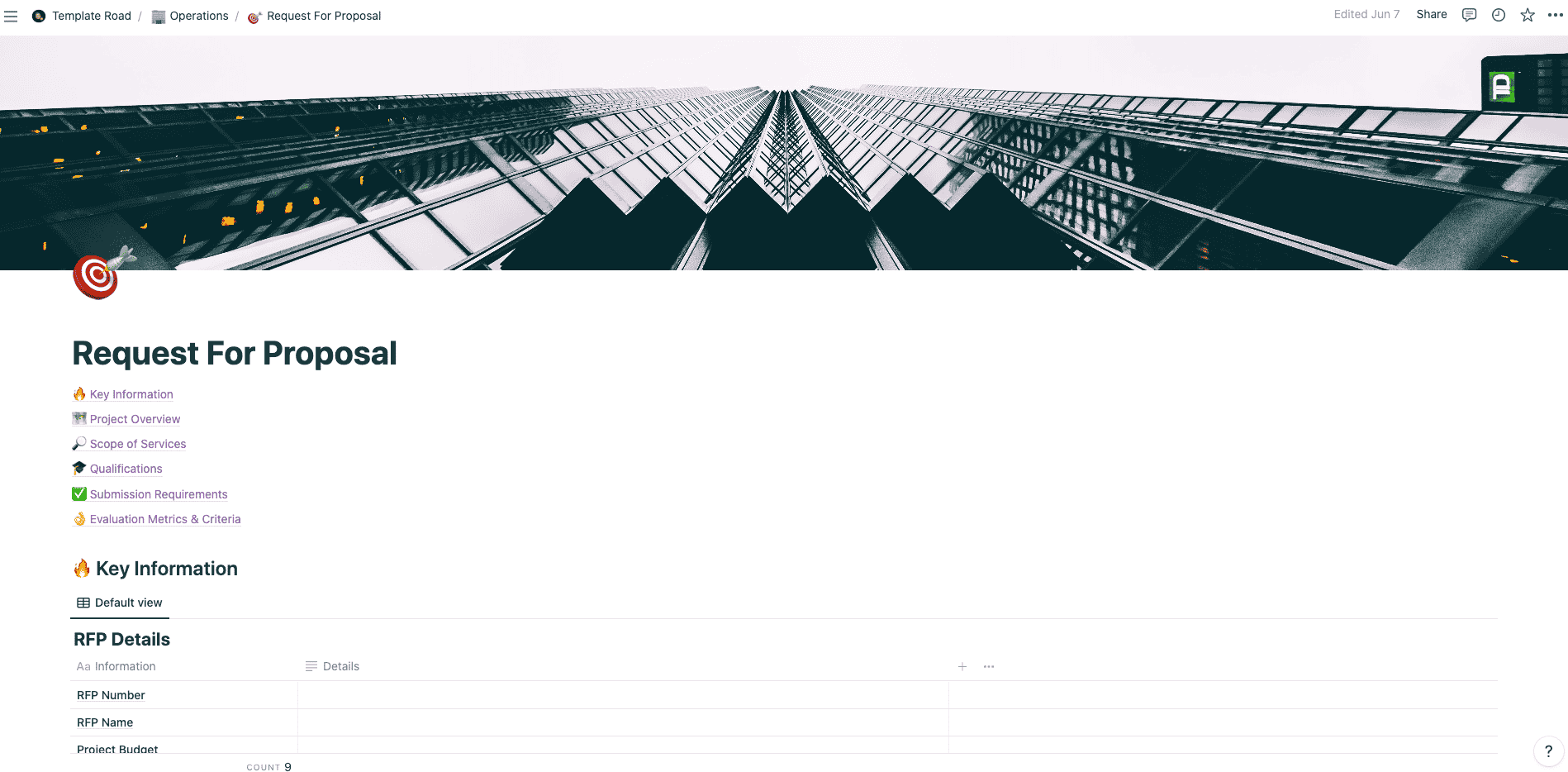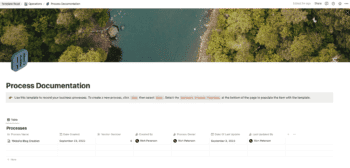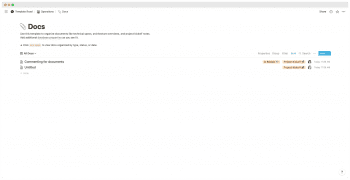This template is perfect for running through a consistent process when requesting proposals. Use this template to prepare an RFP, then organise and evaluate the responses so you can pick the best vendor for the job.
Buy on
Contents
Notion – Request For Proposal (RFP) Template
This template is perfect for running through a consistent process when requesting proposals. Use this template to prepare an RFP, then organise and evaluate the responses so you can pick the best vendor for the job. This Notion RFP template includes:
- Key Information about the RFP
- Project Overview
- Scope of Services
- Qualifications
- Submission Requirements
- Evaluation Metrics & Criteria
- Workflow for RFP submission
Who will love this template?
- Businesses wanting to standardise their RFP process and use Notion documents to ensure a consistent RFP format
- Freelancers, contractors and consultants who submit proposals and want to showcase their skills, experience and proposal in a dynamic way
——————————————-
What you need before purchase
- Basic knowledge of how to use Notion
- Notion account (paid is recommended for this one)
After purchase, you’ll get access to the Notion template immediately. From the template page, click on the Duplicate link (top right-hand of the screen) to copy to your account. For ongoing use, delete the sample content then click on Duplicate again to copy & rename.
How to Write an RFP
A Request for Proposal (or RFP) is a document used by organizations to solicit bids from potential suppliers for products or services. The process of writing an RFP can be complex. It requires careful consideration of the organization’s needs and desired outcomes, as well as a thorough understanding of the supplier’s capabilities. In this article, we will provide a step-by-
Step One: Identify Your Goals and Objectives
Before beginning your RFP, it is critical that you clearly define the scope of your project. This includes articulating the objectives, determining the desired outcomes, and specifying the timeline for completion. It is also important to identify any special requirements or criteria that must be met. Once you have identified these goals and objectives, you will be better prepared to create an effective RFP.
Step Two: Research Potential Suppliers
Once you have a clear understanding of your goals and objectives, it is time to research potential suppliers. You should begin by gathering information about the companies or individuals who can meet your requirements. This includes their capabilities, experience in similar projects, pricing structure, and more. Gathering this information will help you select the best supplier for your needs.
Step Three: Write the RFP
Once you have identified your goals and objectives, as well as gathered information about potential suppliers, it is time to write the RFP. This document should include key details such as a description of the project, timeline, requirements, and any special instructions or criteria. It should also include instructions for how bidders should submit their bids.
Step Four: Review and Evaluate Responses
Once the RFP has been sent out and responses have been received, it is time to review and evaluate each bid. This includes comparing them against your original goals and objectives. It is important to take the time to thoroughly review each response in order to determine which proposal best meets your needs.
Step Five: Select a Supplier
After reviewing and evaluating the responses, you should select the supplier who is best suited to meet your needs. Once a decision has been made, it is important to communicate this decision to all of the bidders. This will ensure that everyone is aware of the outcome and can move forward with any necessary next steps.
What should be in an RFP?
An effective RFP should provide clear instructions on how to submit a response and the timeline for doing so. This includes information such as the deadline, any supporting documents required, and the method of submission (e.g., email, online form, etc.).
Evaluation criteria: It is important to clearly define the criteria that will be used to evaluate responses. This may include factors such as cost, experience, customer service, or any other criteria that are relevant to your project.
Instructions for questions: If there is an opportunity for bidders to ask questions about the RFP, it should be clearly stated in the document. This includes providing a timeline for when and how questions can be submitted.
The importance of a well-written RFP
A well-written RFP is essential for ensuring that potential suppliers understand your needs and are able to submit a response that meets them. It also helps you evaluate the various bids and select the one that best suits your needs. By taking the time to create a detailed, accurate RFP, you can ensure that your organization receives the best possible service or product.
What is a Request for Proposal (RFP)? (Definition & Meaning)
A Request for Proposal (RFP) is a document issued by a company to potential suppliers or contractors. This document outlines the requirements and specifications of a project and is used to solicit bids from suppliers or contractors. The RFP includes detailed information about the scope of work, timeline, budget, evaluation criteria, and any other specific instructions that must be met in order to be considered for the project.

















